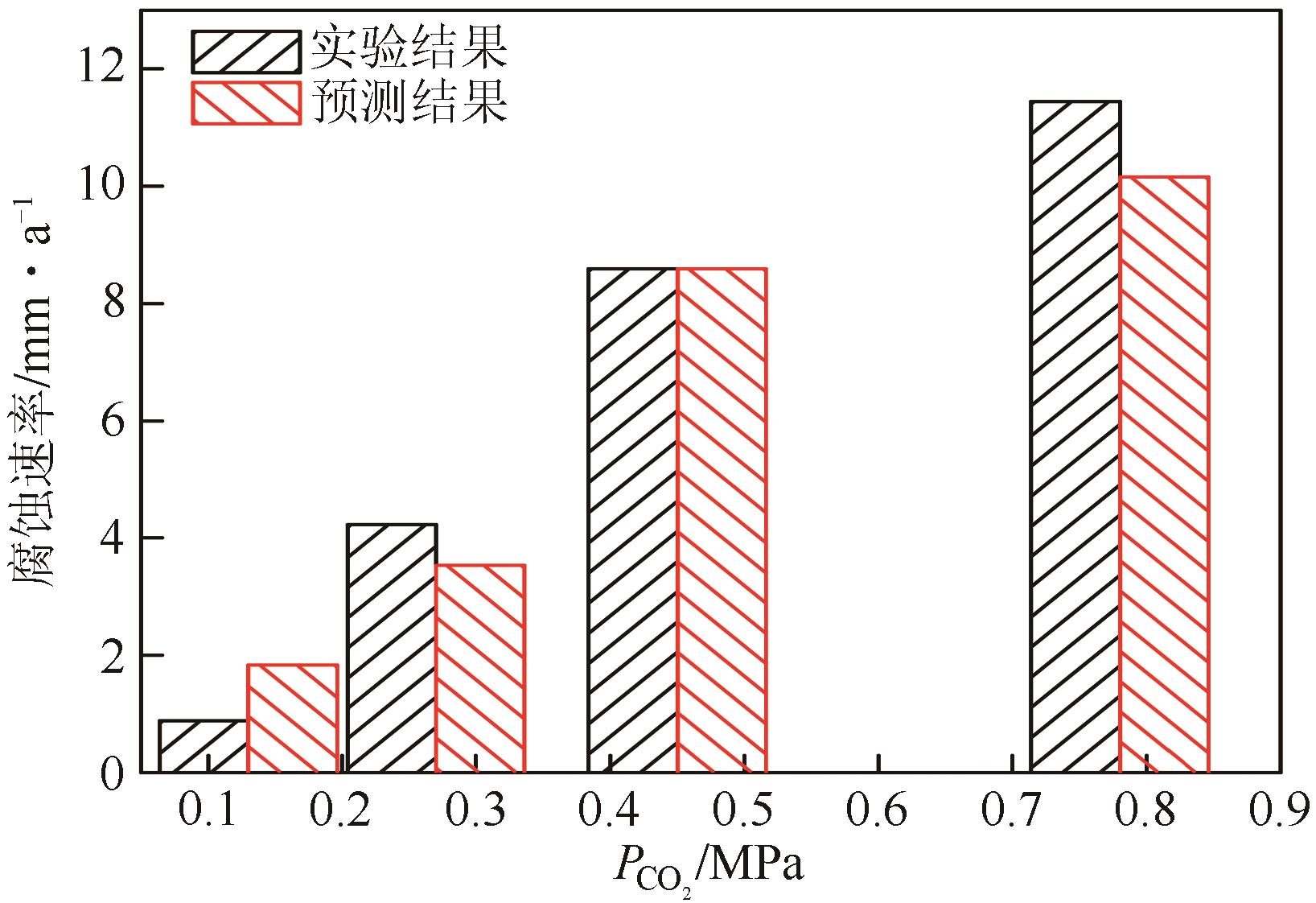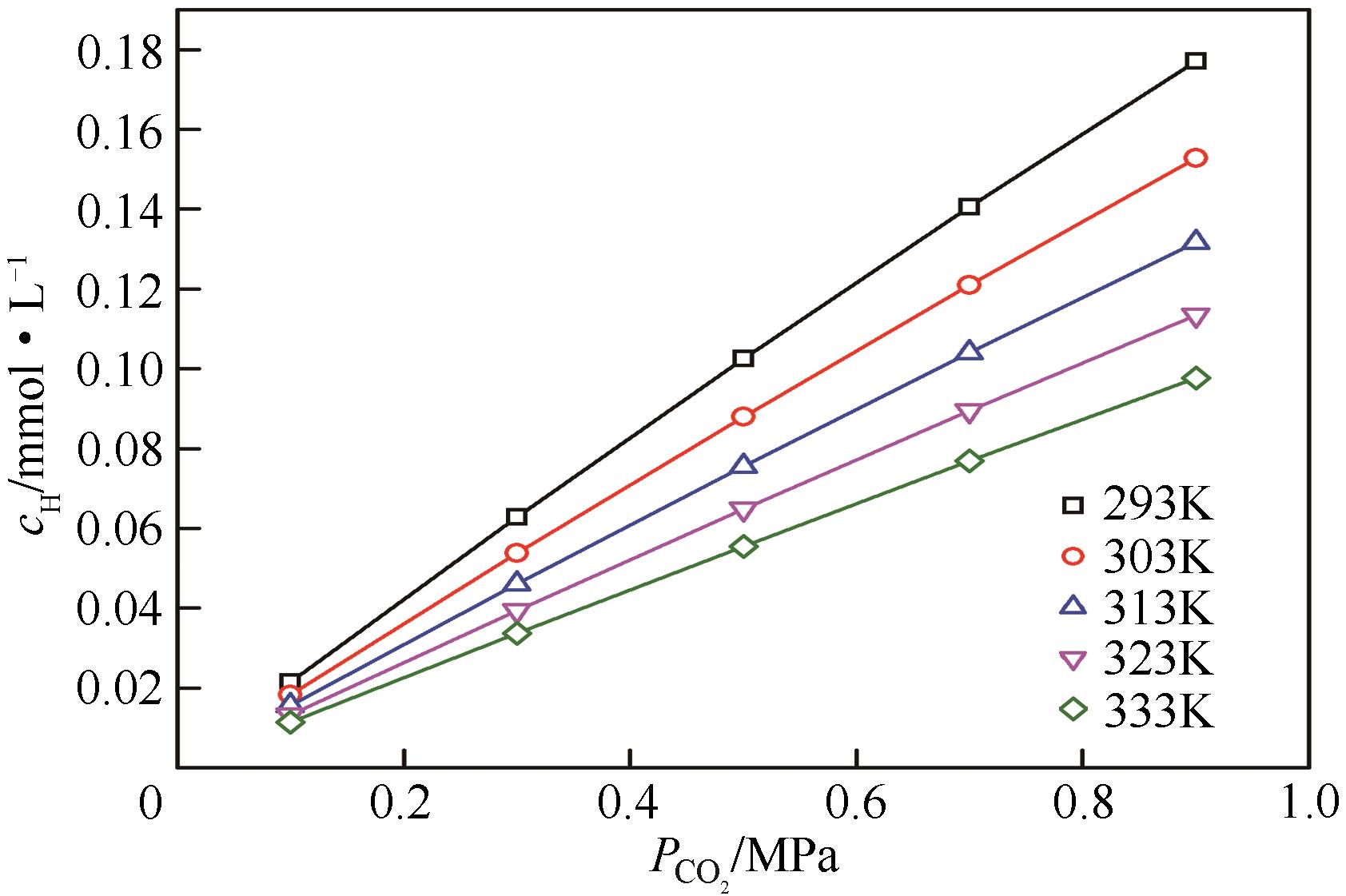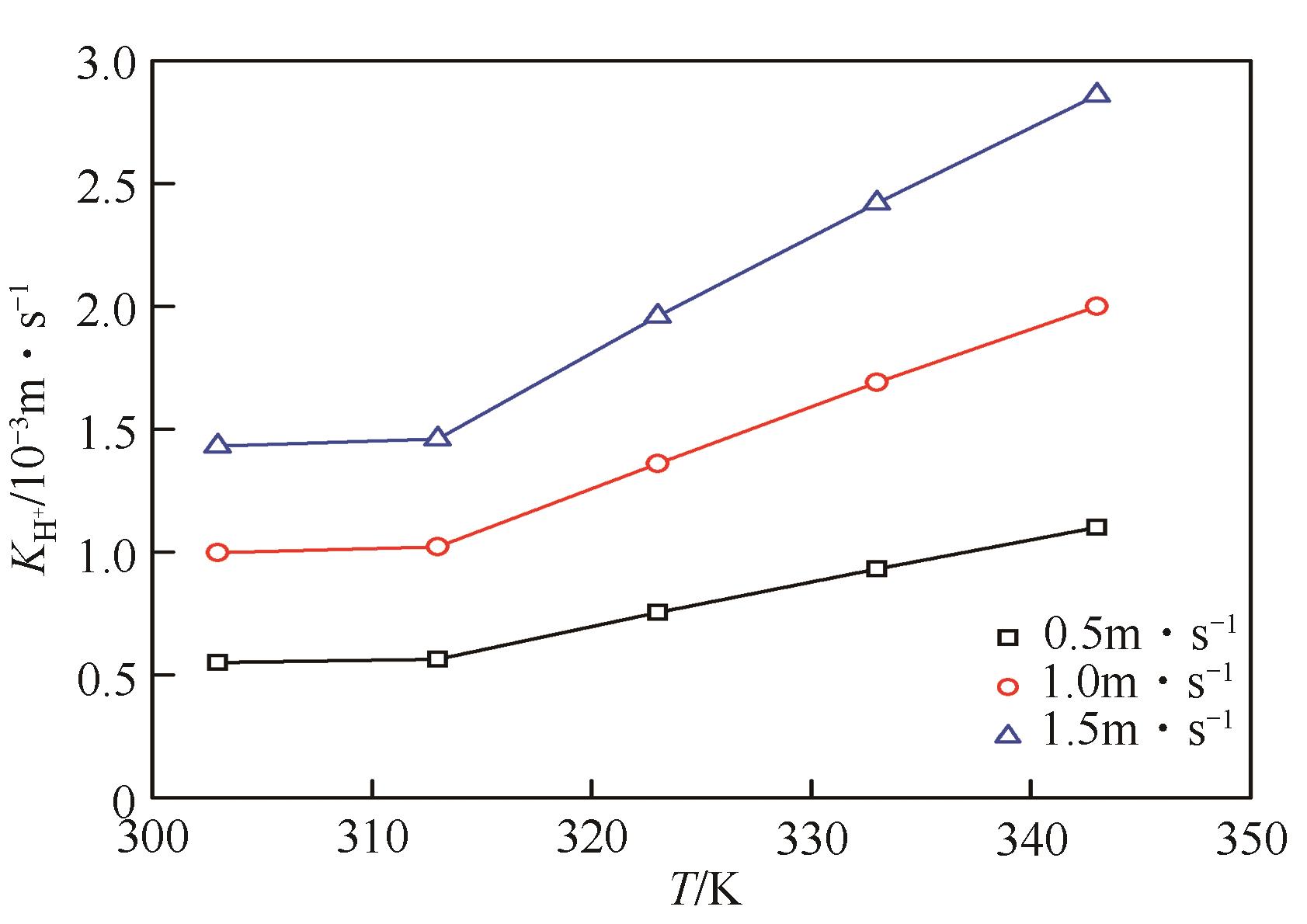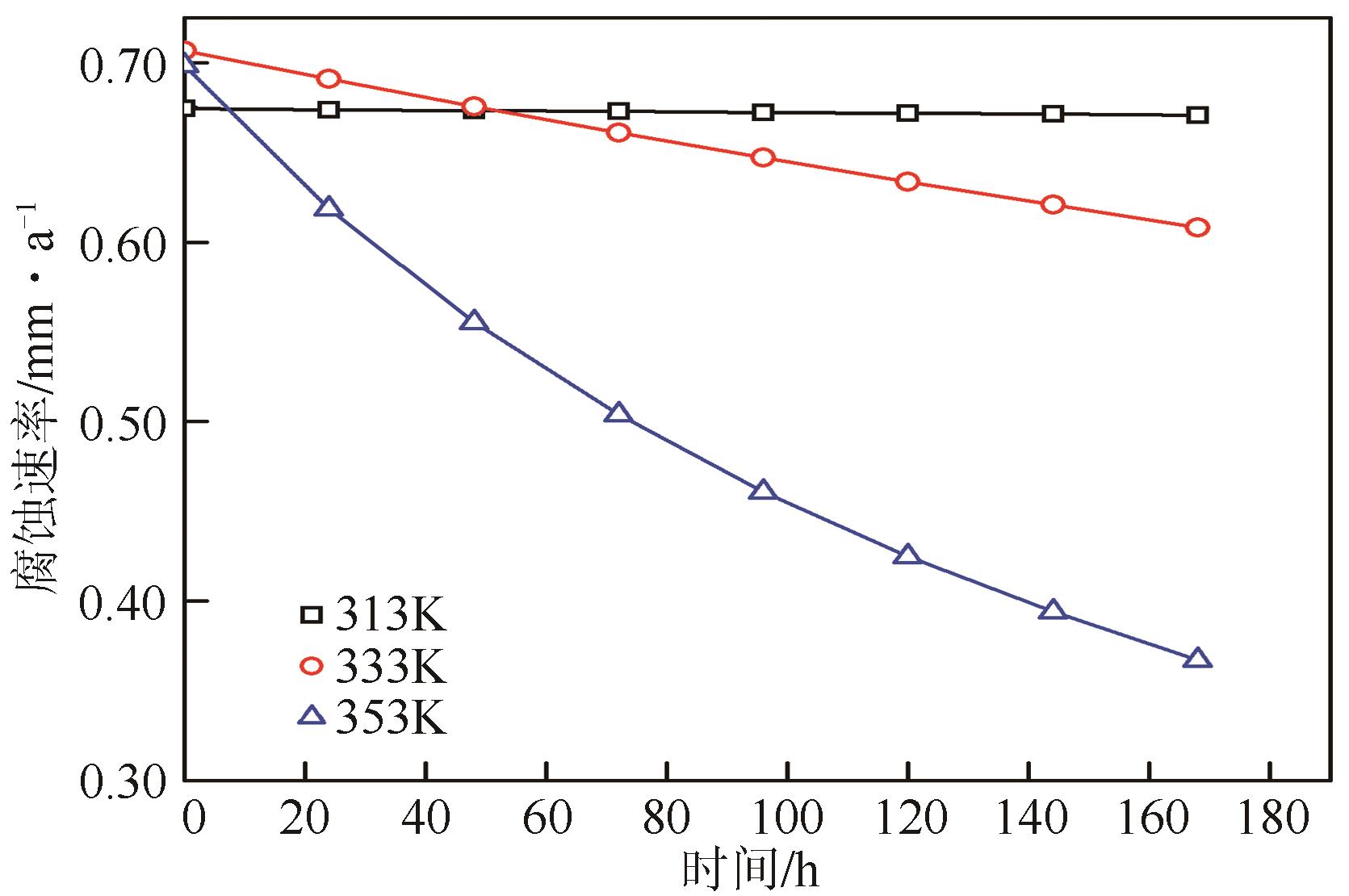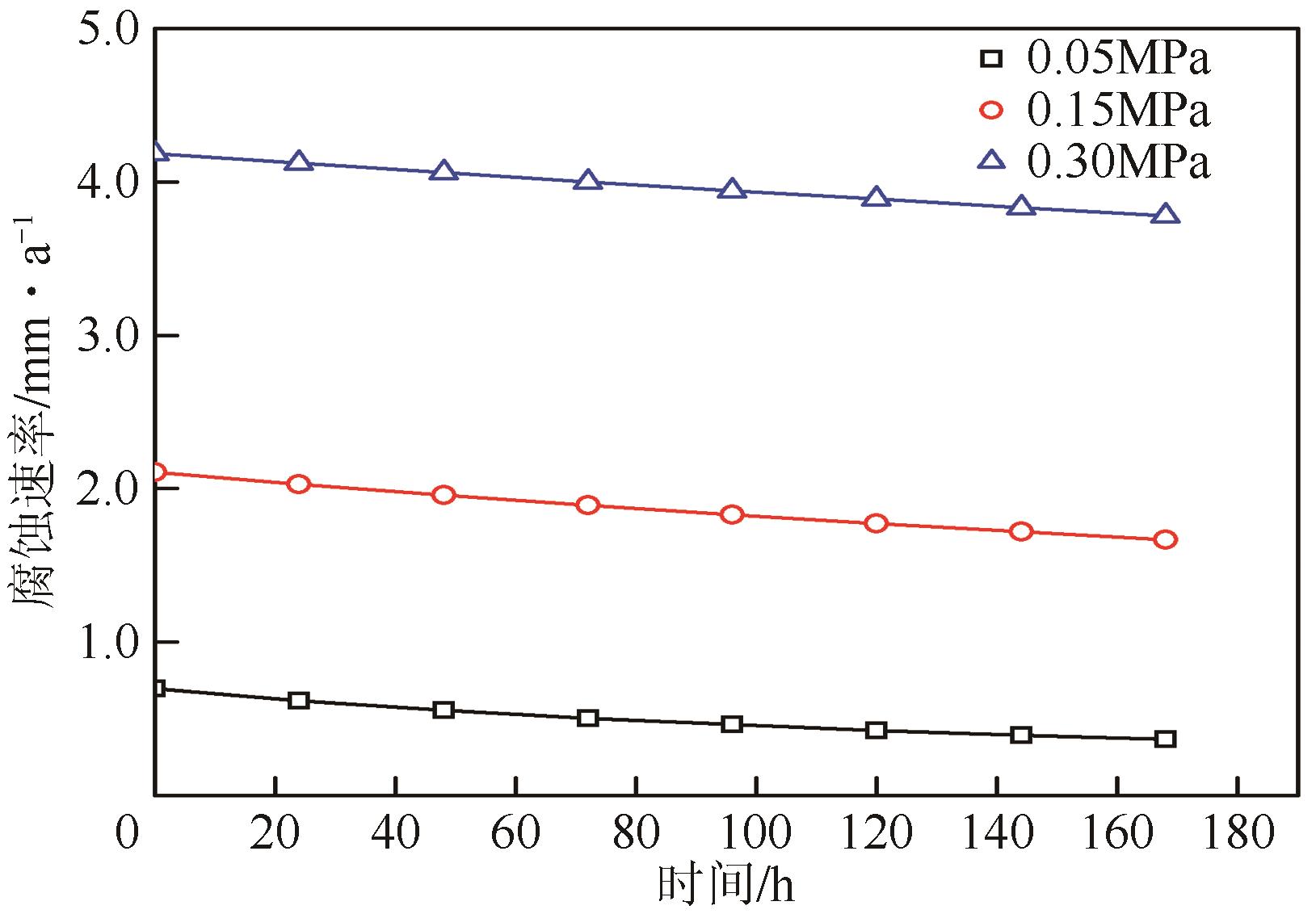| 24 |
SONG F M. A comprehensive model for predicting CO2 corrosion rate in oil and gas production and transportation systems[J]. Electrochimica Acta, 2010, 55(3): 689-700.
|
| 25 |
MAI W J, SOGHRATI S. New phase field model for simulating galvanic and pitting corrosion processes[J]. Electrochimica Acta, 2018, 260: 290-304.
|
| 26 |
VIETH W R, PORTER J H, SHERWOOD T K. Mass transfer and chemical reaction in a turbulent boundary layer[J]. Industrial & Engineering Chemistry Fundamentals, 1963, 2(1): 1-3.
|
| 27 |
GRAY L G S, ANDERSON B G, DANYSH M J, et al. Effect of pH and temperature on the mechanism of carbon steel corrosion by aqueous carbon dioxide [C]//Corrosion 1990. Houston: NACE International, 1990.
|
| 28 |
WANG Hongwei. CO2 corrosion mechanistic modeling in horizontal slug flow[D]. Athens, Ohio: Ohio University, 2002.
|
| 29 |
SUN W. Kinetics of iron carbonate and iron sulfide scale formation in CO2/H2S corrosion[D]. Athens, Ohio: Ohio University, 2006.
|
| 30 |
SUN W, LIU G C, WANG L D, et al. An arbitrary Lagrangian-Eulerian model for studying the influences of corrosion product deposition on bimetallic corrosion[J]. Journal of Solid State Electrochemistry, 2013, 17(3): 829-840.
|
| 1 |
PAOLINELLI L D, RASHEDI A, YAO J, et al. Study of water wetting and water layer thickness in oil-water flow in horizontal pipes with different wettability[J]. Chemical Engineering Science, 2018, 183: 200-214.
|
| 2 |
NEŠIĆ S. Key issues related to modelling of internal corrosion of oil and gas pipelines—A review[J]. Corrosion Science, 2007, 49(12): 4308-4338.
|
| 3 |
GUAN X R, ZHANG D L, WANG J J, et al. Numerical and electrochemical analyses on carbon dioxide corrosion of X80 pipeline steel under different water film thicknesses in NACE solution[J]. Journal of Natural Gas Science and Engineering, 2017, 37: 199-216.
|
| 4 |
管孝瑞, 金有海, 王建军, 等. 低含液输气管线内两相流动及其CO2腐蚀研究进展[J]. 化工机械, 2017, 44(3): 245-251.
|
|
GUAN Xiaorui, JIN Youhai, WANG Jianjun, et al. Progress in investigating gas-liquid flow and CO2 corrosion in gas transmission pipelines with low liquid loading[J]. Chemical Engineering & Machinery, 2017, 44(3): 245-251.
|
| 5 |
偶国富, 赵露露, 王凯, 等. 10#碳钢在HCl-H2O环境中的露点腐蚀行为[J]. 中国腐蚀与防护学报, 2018, 38(1): 33-38.
|
|
Guofu OU, ZHAO Lulu, WANG Kai, et al. Dew-point corrosion behavior of 10# carbon steel in HCl-H2O environment[J]. Journal of Chinese Society for Corrosion and Protection, 2018, 38(1): 33-38.
|
| 6 |
JIN H Z, CHEN X P, ZHENG Z J, et al. Failure analysis of multiphase flow corrosion-erosion with three-way injecting water pipe[J]. Engineering Failure Analysis, 2017, 73: 46-56.
|
| 7 |
赵垒, 闫怡飞, 王鹏, 等. 气井生产过程中碳钢管柱CO2腐蚀规律[J]. 石油学报, 2019, 40(2): 232-239.
|
|
ZHAO Lei, YAN Yifei, WANG Peng, et al. CO2 corrosion law of carbon steel tubing string in the production process of gas well[J]. Acta Petrolei Sinica, 2019, 40(2): 232-239.
|
| 8 |
胡丽华, 常炜, 余晓毅, 等. CO2分压对碳钢海底管道CO2/H2S腐蚀的影响[J]. 表面技术, 2016, 45(5): 56-61.
|
|
HU Lihua, CHANG Wei, YU Xiaoyi, et al. Effect of partial pressure of CO2 on corrosion of carbon steel subsea pipeline in CO2/H2S environment[J]. Surface Technology, 2016, 45(5): 56-61.
|
| 9 |
EZUBER H M. Influence of temperature on the pitting corrosion behavior of AISI 316L in chloride-CO2 (sat.) solutions[J]. Materials & Design, 2014, 59: 339-343.
|
| 10 |
SK M H, ABDULLAH A M, KO M, et al. Local supersaturation and the growth of protective scales during CO2 corrosion of steel: effect of pH and solution flow[J]. Corrosion Science, 2017, 126: 26-36.
|
| 11 |
NESIC S. Effects of multiphase flow on internal CO2 corrosion of mild steel pipelines[J]. Energy & Fuels, 2012, 26(7): 4098-4111.
|
| 12 |
LIU Q Y, MAO L J, ZHOU S W. Effects of chloride content on CO2 corrosion of carbon steel in simulated oil and gas well environments[J]. Corrosion Science, 2014, 84: 165-171.
|
| 13 |
张国安, 陈长风, 路民旭, 等. 油气田中CO2腐蚀的预测模型[J]. 中国腐蚀与防护学报, 2005, 25(2): 119-123.
|
|
ZHANG Guoan, CHEN Changfeng, LU Minxu, et al. Prediction models for CO2 corrosion of oil and gas fields[J]. Journal of Chinese Society for Corrosion and Protection, 2005, 25(2): 119-123.
|
| 14 |
DE W C, LOTZ U, Dugstad A. Influence of liquid flow velocity on CO2 corrosion: a semi-empirical model[C]//Corrosion 1995. Orlando: NACE International, 1995.
|
| 15 |
OLSEN S, HALVORSEN A M, LUNDE P G, et al. CO2 corrosion prediction model-Basic principles[C]//Corrosion 2005. Houston: NACE International, 2005.
|
| 16 |
POTS B F M, JOHN R C, RIPPON I J, et al. Improvements on de waard-milliams corrosion prediction and applications to corrosion management[C]// Corrosion 2002. Denver: NACE International, 2002.
|
| 17 |
NEŠIĆ S, POSTLETHWAITE J, VRHOVAC M. CO2 corrosion of carbon steel-from mechanistic to empirical modelling[J]. Corrosion Reviews, 1997, 15(1/2): 211-240.
|
| 18 |
NYBORG R. Overview of CO2 corrosion models for wells and pipelines[C]//Corrosion 2002. Denver: NACE International, 2002.
|
| 19 |
HAN J B, CAREY J W, ZHANG J S. Effect of sodium chloride on corrosion of mild steel in CO2-saturated brines[J]. Journal of Applied Electrochemistry, 2011, 41(6): 741-749.
|
| 20 |
KITTEL J, ROPITAL F, GROSJEAN F, et al. Corrosion mechanisms in aqueous solutions containing dissolved H2S. Part 1: Characterisation of H2S reduction on a 316L rotating disc electrode[J]. Corrosion Science, 2013, 66: 324-329.
|
| 21 |
TRIBOLLET B, KITTEL J, MEROUFEL A, et al. Corrosion mechanisms in aqueous solutions containing dissolved H2S. Part 2: Model of the cathodic reactions on a 316L stainless steel rotating disc electrode[J]. Electrochimica Acta, 2014, 124: 46-51.
|
| 22 |
SIPILÄ K, BOJINOV M, JÄPPINEN E, et al. Localized corrosion of pressure vessel steel in a boiling water reactor cladding flaw-modeling of electrochemical conditions and dedicated experiments[J]. Electrochimica Acta, 2017, 241: 10-27.
|
| 23 |
CHOI Y S, DUAN D L, JIANG S L, et al. Mechanistic modeling of carbon steel corrosion in a methyldiethanolamine (MDEA)-based carbon dioxide capture process[J]. Corrosion, 2013, 69(6): 551-559.
|
 ), 黄慧1, 南翠红1, 王跃社2(
), 黄慧1, 南翠红1, 王跃社2( ), 卢金玲1
), 卢金玲1
 ), HUANG Hui1, NAN Cuihong1, WANG Yueshe2(
), HUANG Hui1, NAN Cuihong1, WANG Yueshe2( ), LU Jinling1
), LU Jinling1


